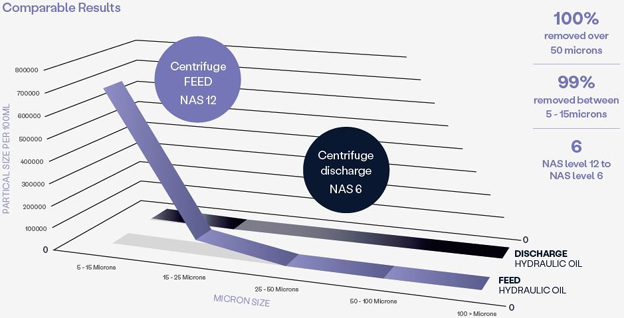As the geothermal energy market heats up, techniques pioneered in the Middle Eastern desert could dramatically boost geothermal production rates-helping unlock a potentially vast global resource. Gary MacDonald, Middle East-based Global Business Development Manager with OSSO, a provider of specialist fluid temperature control and separation solutions, assesses how mud cooler techniques could transform the economics of geothermal production.
The geothermal energy market is quickly building up a head of steam and could soon provide a vast sustainable and renewable energy resource. A recent study found that geothermal electricity generation in the US alone could increase by more than 26-fold by 2050 and that the global market could soon hit $50 billion.
Yet drilling geothermal wells is more costly than conventional oil-drilling and it remains a daunting challenge to deliver the required ROI. Companies face the challenge of using downhole tools in geothermal wells that are usually 3-5km deep and reach temperatures of 300 to 400°F. Measurement while drilling tooling, for instance, has a typical maximum operating temperature ranging between 300 to 350°F.
Geothermal drilling was originally based on modified methods from the fossil fuel sector, and insights from the same sector can help take the heat out of this problem. For example, mud cooling techniques adapted from oil and gas wells could dramatically accelerate geothermal production rates, reduce repair costs and round trips, extend productive drilling time and increase pay zone hole sections.
A solution pioneered in the heat of the desert
Mud coolers from offshore energy projects that use seawater as the cooling medium were recently adapted for onshore gas extraction in the harsh heat of the Middle Eastern desert. Our technical professionals combined our high-volume mud cooler with a closed-loop chiller system which recycles cooled water through the plate heat exchanger, a central component of the mud cooling system. The success of these techniques demonstrates the possibility of high-volume energy extraction in high-temperature terrains, with clear applications for geothermal energy.
Accelerating production
Mud coolers enable downhole tools to operate for longer within their maximum temperature threshold. Round trips can take 30 hours while land rig operations and all support services cost up to $60,000 USD a day. Extending the life cycle of tools in the wellbore would reduce round trips, simultaneously cutting geothermal support service costs and reducing non-productive drilling time. Keeping downhole tools working for longer within their temperature range also reduces refurbishment costs.
Pump up the volume
Volume is pivotal to making geothermal energy economically viable and this would dramatically increase ROI by creating faster and cheaper drilling campaigns and larger pay zone hole sections.
Mud cooling systems are still in their infancy in geothermal exploration and development, but they could remove one of the key constraints on market growth. The application of techniques from the oil and gas sector demonstrates how lessons learned from the fossil fuel industry could be instrumental in our transition to a viable renewable energy economy.
Extending the life of Hydraulic Oil
How do you effectively extend the life of hydraulic oil?
Irrespective of industry oil is a finite and at times expensive commodity to obtain, so the opportunity to reuse rather than replenish is one that holds lasting material benefits right across the supply chain.
Not withstanding the obvious benefits such as OPEX reduction and tool life extension, the added benefit comes from the environmental perspective. The effective reuse of hydraulic oils will considerably improve a company’s environmental position - the more hydraulic oil that can be effectively cleaned and recycled, the less there is to dispose.
The process
To prove the concept and further understand just how much oil could be effectively cleaned and reused Osso undertook a series of trials on a Hydraulic Power Unit (HPU) using one of our high-speed oil separators and the results were powerful indeed.
Prior to commencing the test, samples of the fluid were taken and underwent particle analysis first by Osso and then by an independent third-party company to validate findings. The hydraulic oil in its current state was registering at NAS level 12.
The HPU used, had a tank capacity of 550 litters and utilised Black Gold HyTask S VG oil with a viscosity reading of 68 cSt at 40° and a density reading of 0.88 S.g. at 15.6°C
Comparable results

On completion of the cleaning process, samples were taken for a two-stage analysis, firstly by Osso and then independently by a third-party company validating our original results. the findings proved beyond question that the process and equipment used significantly improved the quality of the fuel, reducing the feed from NAS level 12 to NAS level 6. Furthermore, the analysis showed that for every 100ml of processed hydraulic oil the water content reduced significantly, with 100% of particles of 50 microns removed and almost 99% of particles between 5-15 micron were removed. The removal of the unwanted particulate and free water enabled 500 litters of hydraulic oil to be reused with a NAS level 6 reading, thus extending the life of the oil and reducing OPEX by more than 50%
Strong results
- Provided 500 litters of oil re-use
- Removed 100% of particles over 50 microns
- Removed 99% of particles between 5-15 microns
- Moved from NAS level 12 to NAS level 6
- More than 50% reduction on OPEX
Methodology
OSSO's approach is a full-service scalable model, starting from initial onsite inspection and oil analysis to equipment install, process management through to output discharge analysis and recommendations. By adopting a full-service model, we have the ability to move seamlessly from one unit to the next therefore avoiding lengthy downtime for ourselves and our clients.
KeyFacts Energy Industry Directory: OSSO
 KEYFACT Energy
KEYFACT Energy